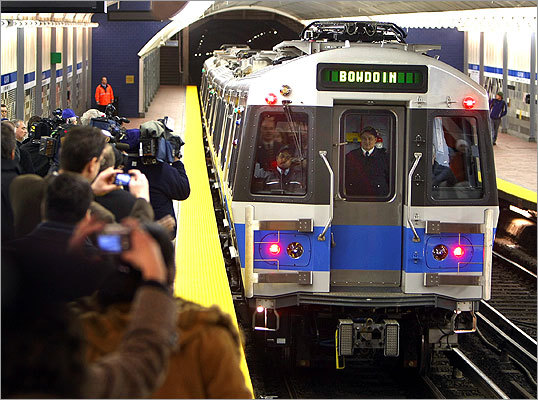After a twenty+ minute, as scheduled, wait for a WMATA train, you might have a gripe or two too.
Carpeted trains and fabric seats were a fad of the 70s. Like disco, bell bottoms, Brutalism, gas guzzling cars, and highway sprawl, all terrible ideas.
Also, if we're bringing up BART, can I say that their old trains are something scary. One eyed monsters. I have to repress the urge to run away every time I use BART. Admittedly, there's other reasons to run too!
Indeed, if we're going to continue talking about other systems' trains, in particular those that came online in the late 60s, early 70s, might as well tie it back to our main subject:
The carpets and fabric seats were indeed an epidemic of the time (though I'll probably be the one of the few of my generation to say that I love disco). However, BART's public involvement, testing, and outreach in designing the features of the new cars has been fully 21st Century. I hope the MBTA can do the same with the upcoming procurement.
If you
look at BART's project pages, all the information on the project is well-organised and easily digestible. They not only provide a background on why the cars are needed, but also summarise the new features that were tested in revenue service to be included in the final design, feedback from multiple public demos and mockups, and even a brief description of the procurement process.
One of the things we
NEED to bring to the new Orange and Red Line cars is this baby: behold -
THE THREE-HAND HOLD STANCHION
I think this may have been brought up at an MBTA Rider Oversight Meeting a few months back, the first in which the vehicle procurement people made their presentation. Ergonomics for poles and stanchion placement is definitely high priority. As was mentioned a few posts back, they definitely want to get the right balance for flip-up seats - too many and it starts to add too much weight (one of the ROC members asked why ALL the seats couldn't be flip-up).
I'd like to see metal grab holds considered instead of the flimsy straps that leave people flapping around when the train starts and stops no better than if they were standing on their own. The MTA has several models of their buses equipped with mini-grab holds in between the stanchions that are secured into the seatbacks:
Also, would it be too much to ask for a less derpy design? I always thought the new Blue Line cars looked a bit... off... inelegant... I also never realised how much they look like the Bombardier 1800 series Red Line cars.
Even the PA-5, PATH's successor to the PA-3 (and PA-4), cousin of our late 0600 series Blue Line cars and current 1200 Orange Line series, looks relatively modern. It bears striking resemblance to the new WMATA 7000 series cars and MTA's R142 and R160, perhaps by design considering they're all Kawasaki orders.






